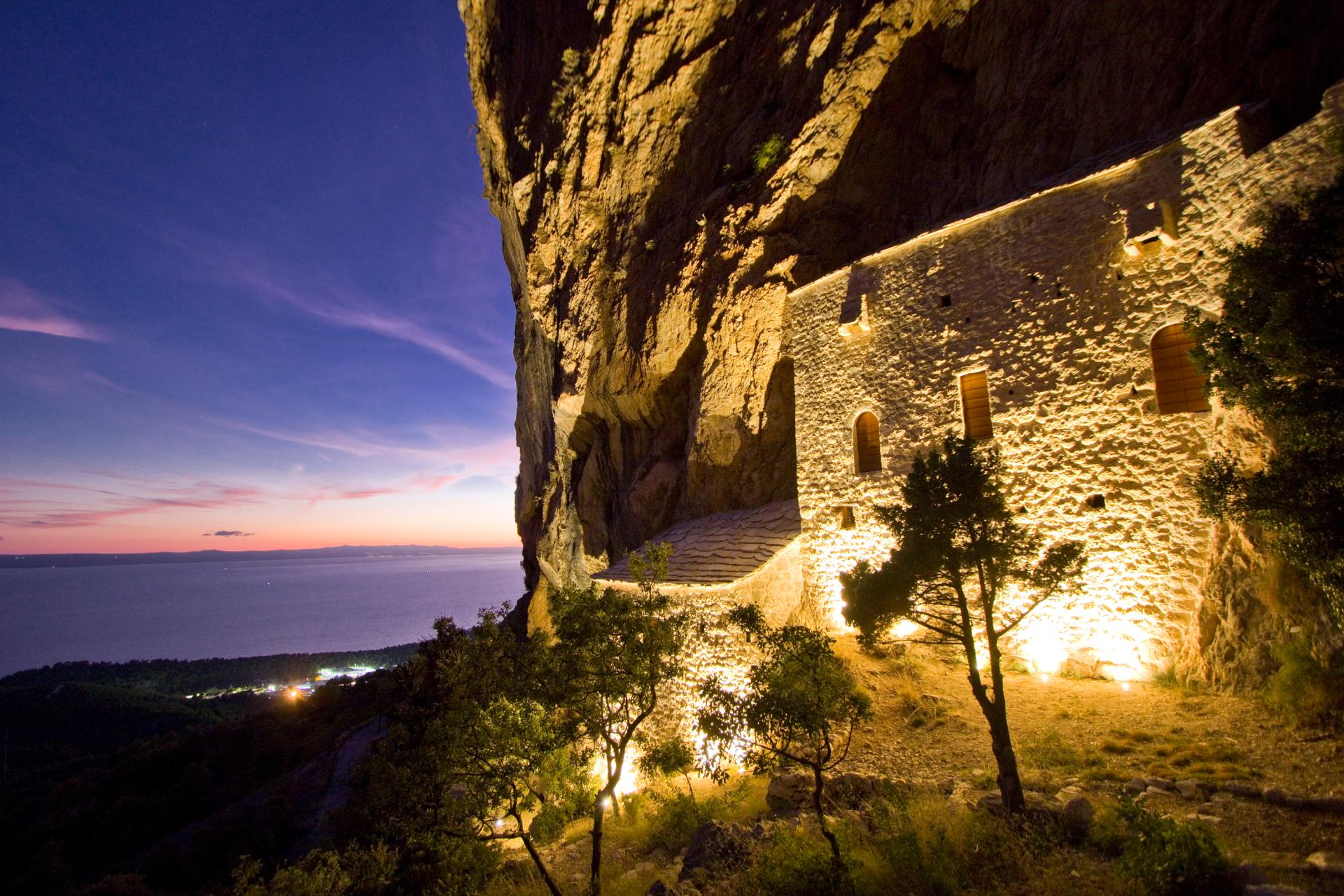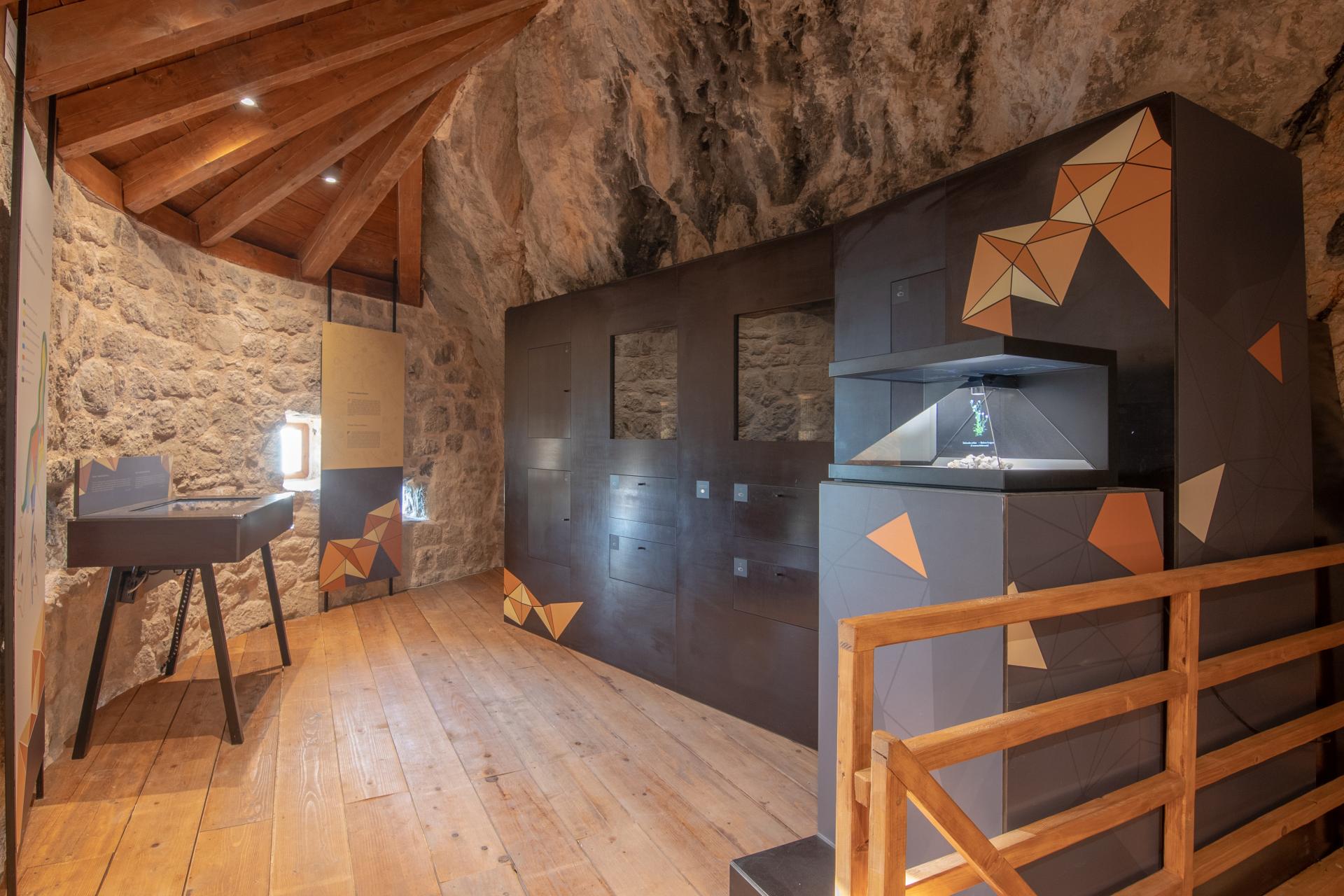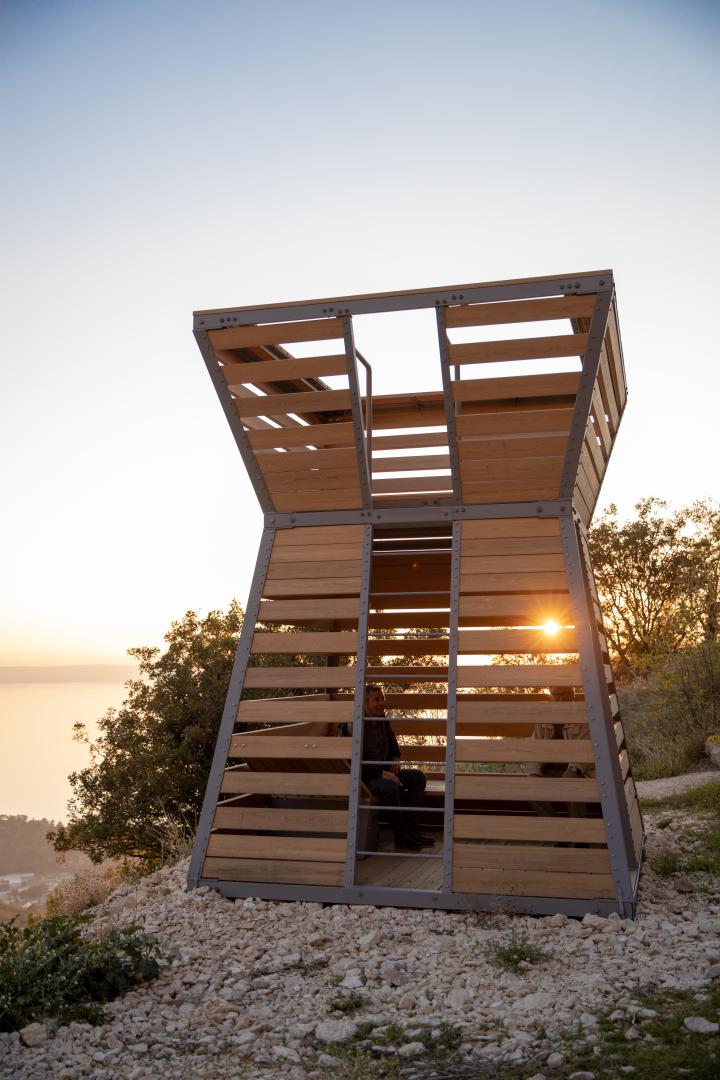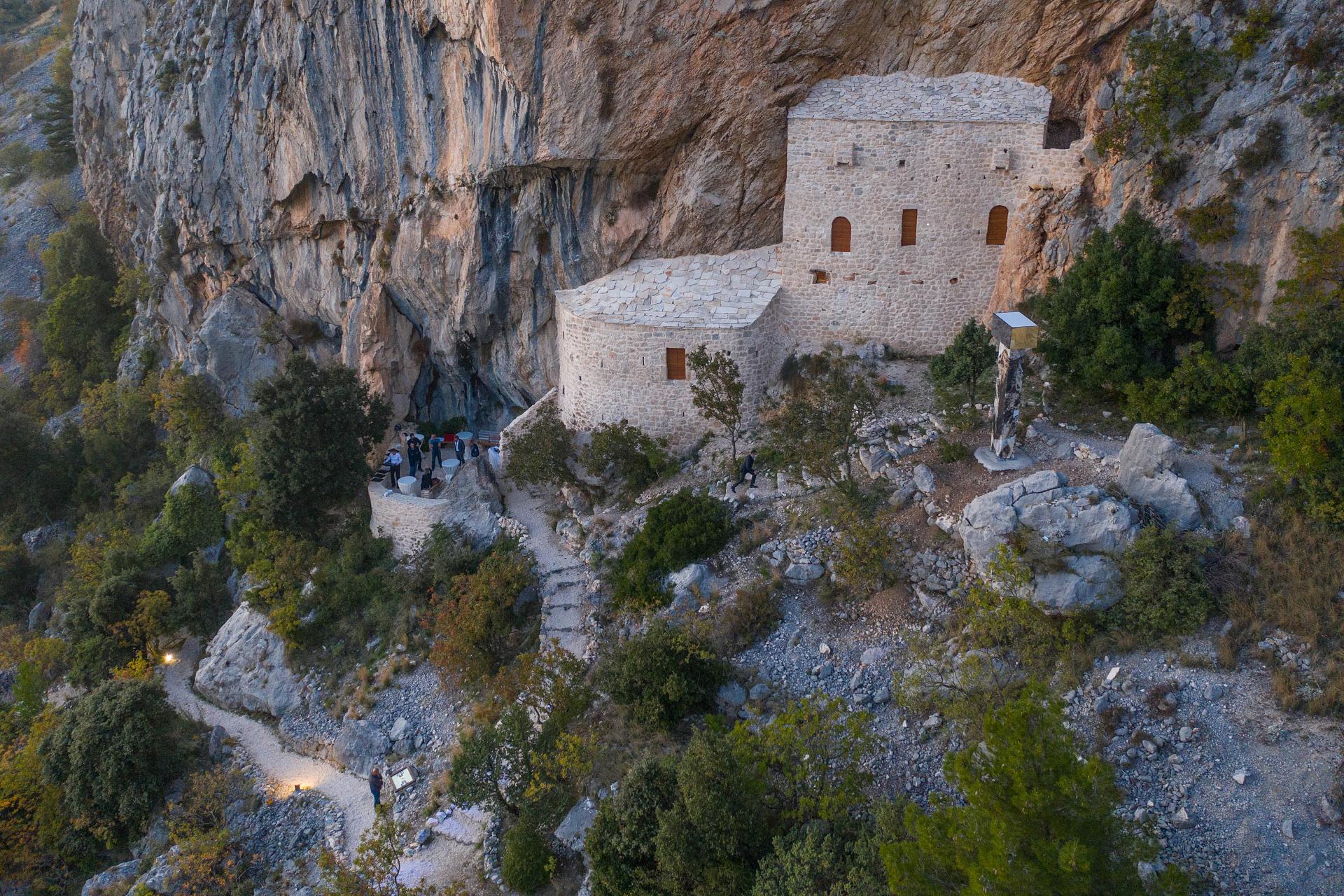KOTIŠINA Revitalization
Basic information
Project Title
Full project title
Category
Project Description
In the last half century, Kotišina and Podbiokovlje have been experiencing depopulation, economic decline, and the decline of cultural heritage. The project is designed to provide an integrated tourist offer, which drastically redirects the current type of tourism in the Makarska area. The location, the hamlet of Kotišina, provides demand outside the coastal zone in activities and facilities based on cultural and natural heritage, and the synergy of tourism and local production systems.
Geographical Scope
Project Region
Urban or rural issues
Physical or other transformations
EU Programme or fund
Which funds
Description of the project
Summary
Project realized the reconstruction, restoration and revitalization of the cultural and historical heritage of the hamlet of Kotišina and its tourist valorization.Location of the project-the hamlet of Kotišina ensures the reorientation of the focus of tourist demand outside the coastal zone in activities and contents based on the cultural and natural heritage of the Biokovo Botanical Garden, and the synergy of tourism and local production systems. In addition to the physical restoration of valuable cultural and historical buildings, their connection with other attractive facilities in the hamlet area was realized in a unique offer consisting of monuments of cultural and historical heritage and natural resources of Biokovo Nature Park,located next to Kotišina.Several buildings were renovated, interpretation and presentation of cultural and historical contents were realized, as well as landscaping.The defensive fortress of Veliki Kaštel, located along the cliffs of the mountain, has been renovated and put into operation, and an Interpretation Center for Visitors has been established to preserve, interpret and present cultural and natural heritage.Restoration of two sacral buildings-the church of St.Martina and Ante, contribute to the expansion of the tourist offer. In cooperation with the local population, a hiking and biking trail has been arranged.The activities are interconnected and complementary and affect the diversification of the tourist offer of the City of Makarska.The realization of the project has a significant effect on a larger number of visitors of different interests.The project combines the existing cultural, historical and natural resources, and the addition of innovative content has created a wide range of tourist offer.The realization of the project and the achievement of general and specific goals within it contributes to the socio-economic development of the hamlet and the City of Makarska as a whole, and gives a positive existing resources.
Key objectives for sustainability
The principles of sustainable management of the landscape in which the natural and cultural elements of the space have grown, complemented by technological innovations, will contribute to reducing the negative impact on the environment and increasing visitors' awareness of the importance of its preservation. The arrangement of hiking, mountaineering and cycling trails will encourage the local community and visitors to environmentally friendly forms of mobility and reduce car use and thus reduce the amount of exhaust emissions into the atmosphere at the local level. In addition, as part of the arrangement of the pedestrian-bicycle path, activities are planned to install power systems for electronic devices (smartphones, tablets, cameras) at rest areas through the use of solar panels, which directly affects the improvement of energy efficiency. Bearing in mind the proper waste management and the sequence of composting activities already carried out in the botanical garden, baskets for selective waste disposal (paper, plastic, organic waste and other waste) will be set up. In this way, it will be possible for all visitors to conscientiously manage waste during the free time they spend in the hamlet of Kotišina. During the implementation of the project, measures to minimize the total consumption of the lighting system and protection from light pollution were observed, given that this is the area of the Biokovo Nature Park.All selected luminaires have an LED light source, which brings a significant advantage over similar solutions with conventional light sources.As part of the Makarska-Kotišina pedestrian and bicycle path arrangement, activities have been prepared to set up a power supply system for electronic devices (smartphones, tablets, cameras) within the rest area through the use of solar panels, which directly affects energy efficiency.
Key objectives for aesthetics and quality
The natural area in which the Kotišina area is located is rich in many natural, historical and landscape values. In addition to the endless view of the collision of mountain and sea, there are numerous traces of human life, buildings woven at the foot of the mountain massif, many sources of drinking mountain water, the richness of indigenous plant communities and floral elements, and a wealth of visual, auditory and olfactory stimuli. exceptions give an unforgettable experience of the union of man and nature. Inter-local migrations through the 20th century had a partial and positive effect because they protected Kotišina from excessive and unplanned construction, so today we have preserved cultural heritage and natural environment suitable for the development of cultural, recreational tourism, and possible beginnings of health tourism. The advantage of Kotišina is the proximity of the coastal and more developed part that gathers the population and attracts many visitors, which supports the targeted increase in the number of arrivals in Kotišina. Through this project, cultural heritage facilities in the Kotišina area have been revitalized and interactive and sustainable year-round recreational and cultural facilities have been set up for all visitors. By realizing the project in Kotišina and copying a similar model to other settlements / hamlets within the Biokovo Nature Park, we have potentially created an absolutely new and different tourist offer of this area. By connecting the coastal area and the hamlets of Podbiokovlje, it would further contribute to the development of cultural tourism in the City, because the "old settlements" have a rich cultural and historical value.
Key objectives for inclusion
The natural area in which the Kotišina area is located is rich in many natural, historical and landscape values. In addition to the endless view of the collision of mountain and sea, there are numerous traces of human life, buildings woven at the foot of the mountain massif, many sources of drinking mountain water, the richness of indigenous plant communities and floral elements, and a wealth of visual, auditory and olfactory stimuli. exceptions give an unforgettable experience of the union of man and nature. Inter-local migrations through the 20th century had a partial and positive effect because they protected Kotišina from excessive and unplanned construction, so today we have preserved cultural heritage and natural environment suitable for the development of cultural, recreational tourism, and possible beginnings of health tourism. The advantage of Kotišina is the proximity of the coastal and more developed part that gathers the population and attracts many visitors, which supports the targeted increase in the number of arrivals in Kotišina. Through this project, cultural heritage facilities in the Kotišina area have been revitalized and interactive and sustainable year-round recreational and cultural facilities have been set up for all visitors. By realizing the project in Kotišina and copying a similar model to other settlements / hamlets within the Biokovo Nature Park, we have potentially created an absolutely new and different tourist offer of this area. By connecting the coastal area and the hamlets of Podbiokovlje, it would further contribute to the development of cultural tourism in the City, because the "old settlements" have a rich cultural and historical value.
Results in relation to category
The general goal of the project was to redirect the tourist profile of the City of Makarska and Podbiokovlje by developing a unique cultural and tourist offer of the revitalized hamlet of Kotišina, with the following specific goals: - Creating a central place of interpretation and presentation of the cultural and natural heritage of Kotišina - Creating unique interactive experiences for a wide group of visitors through the innovative use of the latest technologies - Improving the system of protection and management of protected cultural, historical and natural heritage - Increasing employment and intensifying economic activity for further sustainable development of Kotišina All these goals have contributed to the recognizability of Podbiokovlje's offer as well as the extension of the tourist season, which is currently predominantly based on the summer months. The results of the project are: - Established visitor center, equipped with the latest multimedia technology (virtual reality) to create a central place of interpretation and presentation of the heritage of Kotišina - Directly created 11 jobs in the cultural heritage sector; - Reconstructed Church of St. Ante with landscaping; - Developed new cultural and tourist content: fully equipped outdoor stage PROSLAP - Developed network of fully equipped educational and interpretive trails through Kotišina with the use of the latest technologies (augmented reality) - New tourist offer developed: trip "Life in the Botanical Garden" - Reconstructed Church of St. Martina; - New tourist product developed: Integrated walking tour "In the footsteps of the St. Martin's fraternity" - Improved tourist facilities with the realization of two adrenaline walking tours "Kaštel Kotišina" and "Kotišina - forgotten farming routes"; - Two buses equipped with a modern translation system in 16 foreign languages; - Realized 1 cyclo tourist route in the local area; - Set of 3 innovative, fully equipped bicycle rest areas
How Citizens benefit
Due to the lack of content related to cultural heritage, not only the tourist offer of the area is impoverished, but also the local population who is not sufficiently informed about the cultural heritage, ethnology and historical development of the area. Recreational trails include elements and objects of cultural heritage, educational workshops, innovations in education and information about cultural heritage, and increased media visibility to provide not only increased level of knowledge of the local population, but the development of a new branch of tourism, cultural tourism. this area to continue its long-term economic development. With the development of cultural tourism, the number of visitors (local and foreign) has increased through excursion routes, and thus a greater offer of tourist agencies and the strengthening of the Tourist Board of the city. One of the primary interests, accommodation capacity in renovated traditional houses in the village, has also increased. The local population was involved in the planning of the project back in 2015, when the road to the site of the Church of St. Martin for preparatory archeological excavations. Also, the local population is included in the entire presentation part, ie through the ethnological part of the permanent exhibition. It was the locals who gave the key inputs on the basis of which the conceptual design of the permanent exhibition was made. In addition to the above, the local population has completely free entry to all facilities that have been realized by the project.
Physical or other transformations
Innovative character
In the renovated Veliki Kaštel, multimedia content has been developed, ie an Interpretation Center for visitors, and it will serve in the preservation, presentation and interpretation of the cultural and natural heritage of the village of Kotišina. The interactive display of the center is divided into three topics: archeology, ethnology and natural heritage. Each theme will occupy one or more floors. Archaeological exhibits found at the Kotišina site, ethnological objects and stories describing the way and style of life of the population with a special emphasis on the connection between human activities and nature are on display. Part of the center is dedicated to the natural heritage and the phenomenon of great plant diversity in the wider local area. Through a program of permanent and occasional exhibitions, educational workshops, which are conducted within the themes on which the exhibition is based, users gain new knowledge in one place, upgrade existing knowledge about cultural and natural heritage. Since there is no heritage institution of national and local / regional importance in the city of Makarska, innovative technologies and customized interpretation will be promoted by the Interpretation Center as the main educational point of the wider local area. The organization of the Interpretation Center for visitors within the walls of Veliki Kaštel in an innovative way will attract a large number of visitors of different interests (persons whose primary interest is not cultural and natural heritage) in the area of Kotišina. Through a visit to the Interpretation Center, users are informed and educated about the cultural and natural values of the region and the folk elements of life from that time. Innovations in interpretations have stimulated the raising of public awareness and interest in the preservation of cultural and natural heritage, and improve the valorization of cultural heritage as relevant and desirable attractions. The exhibition space for gathe
Learning transferred to other parties
By arranging the rural cores of the sub-Biokovo area, the pressure on the coastal area could be reduced, which could be directed to the depth of the area on the elevated plateaus of Veliko Brdo, but with controlled planning development. The merging of the Podbiokovo and coastal settlements would open the possibility of a network of thematic paths and trails that would represent the rich cultural and historical heritage that this area possesses. The development of old settlements would significantly affect the character and enrichment of the tourist offer and the strengthening of the entire area of the municipality of Makarska as a tourist center with the development of all accompanying public, cultural and infrastructural facilities and functions. The project of revitalization of the reconstruction of the hamlet of Kotišina could encourage other "forgotten" settlements near Biokovo to be renovated, which could become a favorite picnic spot for the purpose of developing cultural tourism of the entire Makarska Riviera. The general goal of the project is to contribute to the development of space revitalization by developing a segmented tourist offer that becomes an example of best practice in the Republic of Croatia. The realization of the project achieved revitalization, using the cultural and historical heritage of the hamlet of Kotišina and its tourist valorization, and this model is applicable to other Podbiokovo villages. Content such as the Interpretation Center with Multimedia does not exist in the entire area of Podbiokovlje, the city of Makarska and the wider area of the Makarska Riviera, and as such, among other things, would greatly contribute as an example of good practice.




